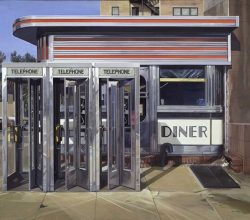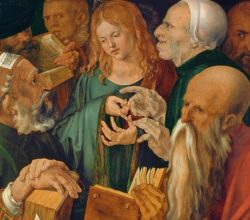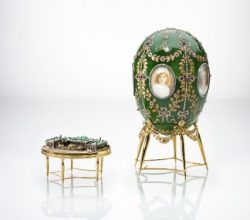
Getting real with Richard Estes
Martin Gayford | Apollo | 28th November 2021
What Estes took from working in advertising – the power of detail, the importance of visual rhythm – is evident in his acclaimed photorealist cityscapes. He paints from photographs, though without attempting a replica image. The difference lies partly in which details he omits. In addition, while showing the “pulsing visual pattern of things”, he includes elements of abstraction. “You always have to have that quality [but] pure abstraction is like having a lot of sound without any melody”.



